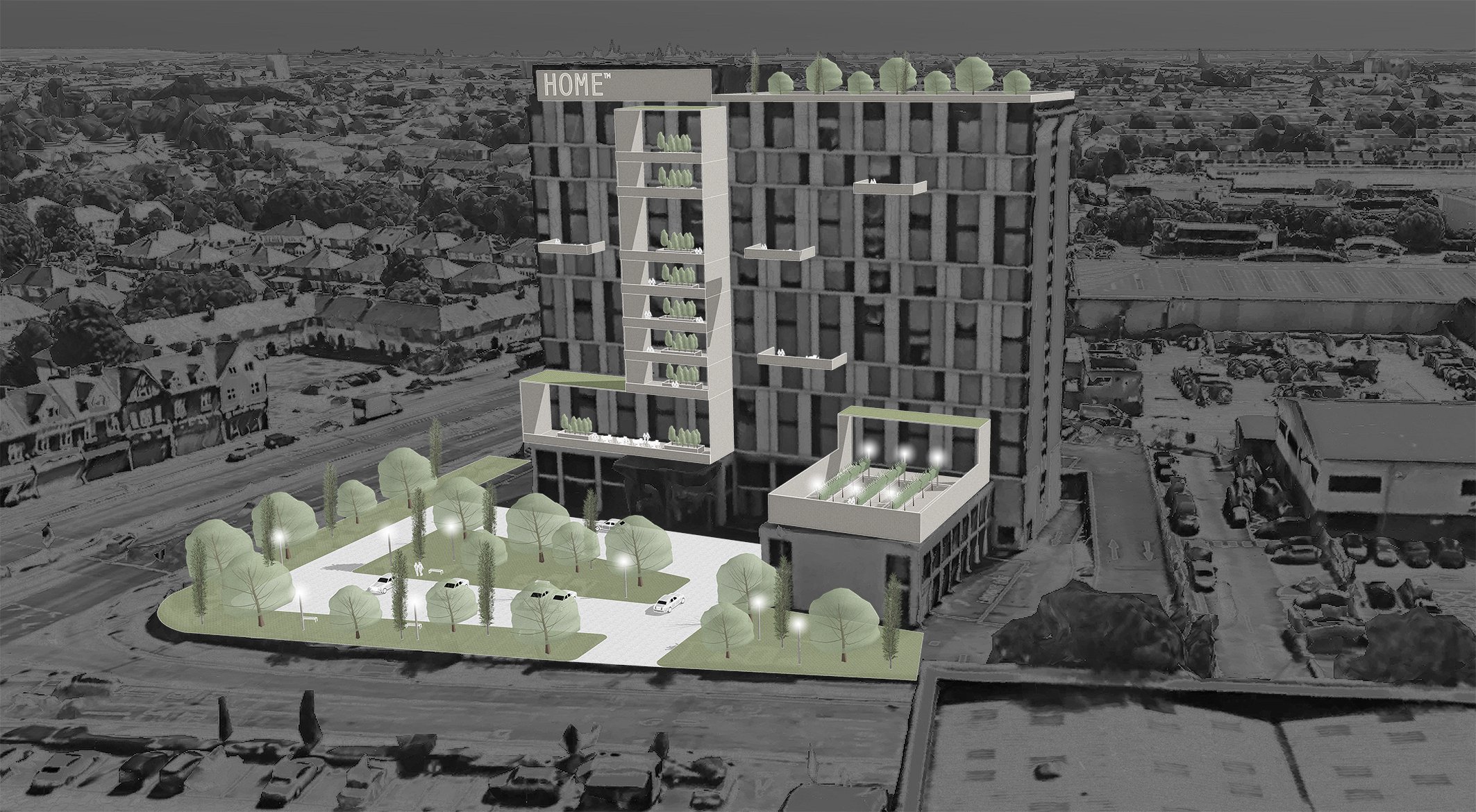architects need to become more adventurous and creative in areas such as mixed-use and renovation to help society meet today’s property challenges
Architecture is more than just the creation of any one architect. It embodies the culture of the period it was created, with architectural projects serving as social commentaries or even challenges to the wider status quo. In a society in which people’s work and personal lives are increasingly integrated, the built environment should be constructed with long-term flexibility and adaptability in mind.
Certainly, it is a challenging time to be an architect, in both the commercial and residential markets. Transactions in the commercial property market have fallen by nearly 67% this year, with downsizing announcements from firms such as HSBC indicating that vacant skyscrapers will soon dominate the build environment. Equally, high mortgage rates on housing, in combination with renting being more affordable than direct property ownership, has contributed to much lower investment in the residential property market. Given this backdrop, it’s not surprising that nearly a quarter of a million UK properties were found to be empty this year.
In such a landscape it is critical that architects evaluate the long-term use and value of their properties, and in their design, consider how they might be converted in the years to come into schools, shops, surgeries or even cultural facilitates. To achieve this, architects need to become more adventurous in terms of, for example, adopting a more creative approach to ‘mixed-use’ developments and be more willing to consider the benefits of redevelopment.
More creative approach to architecture for mixed-use
Today, UK architects need to reflect in their plans the fact that the property landscape has been reshaped by flexible working. The distinction between commercial and residential has blurred, which encourages architects to consider a new approach, with more creative designs, to reflect this likely long-term change.
Traditionally, commercial, and residential properties were often single-use developments. Major financial centres such as Canary Wharf were characterised by towering office blocks that often lacked any recreational facilities or residential aspects. With recent decisions by businesses such as HSBC to downsize, architects are reconsidering how to design office blocks to ensure that if their purpose or use changes, they maintain value.
Given these challenges, architects are increasingly becoming more adventurous in terms of their developments, in both the residential and commercial sectors, and considering how they can enhance the design of structures such as schools, shops or even specialist institutions. This has led to an increased emphasis on taking a more creative approach to ‘mixed-use developments’, in which different property functions are fused in a single localised environment. In a mixed-use commercial property, the primary function of the building may be to provide a set of offices, but it may also be designed to accommodate a range of retail and leisure facilities, such as gyms and restaurants.
There is a demographic impetus to the rise of mixed-use as over 80% of the UK’s population live in urban areas, which is set to increase in the coming years. Such context means that architects have to navigate the issue of building bespoke developments, in limited locations that can give back to the community and maintain utility.
Well-designed mixed-use developments encourage vibrancy in cities and local communities, allowing architects to create unique developments that respond to current property challenges. For instance, at Square Feet, we are currently in discussion with two other architectural bodies for a tripartite, mixed-use cultural space, one which could serve a different religious denomination each day between Friday to Sunday. By creating a single adaptable space for three different cultural functions, we are ensuring the development has the flexibility to respond to changes in demand, allowing it to maintain long-term value.
Mixed-use architecture allows architects to be more ambitious in terms of what can be done with the available space, and who it can benefit. Intelligently implemented mixed-use projects can create far more vibrant urban areas, with the varied aspects benefitting both the individual and the wider community.
For more examples of our bespoke mixed-use developments, see here.
Build-up, don’t build out
Recognising this more ambitious approach to urban design and increased emphasis on mixed-use is essential because it reflects the developing architectural commitment to more sustainable values.
All architects need to consider the environmental impact of their developments, with the built environment being one of the largest global contributors to greenhouse gas emissions and energy consumption. Recently, our Director and Founder, Daniel Leon was pleased to feature in Local.Gov discussing how sustainable designs can address the housing crisis that currently faces the property market. Ultimately, Daniel concluded that we must build properties that address today’s housing needs but remain relevant long into the future in order to improve our sustainability credentials.
Such an emphasis on sustainable design explains the rising popularity of mixed-use, but it also justifies an increased focus by architects on refurbishment and renovation. Renovating properties is not generally favoured by modern architects, because new builds are taxed less heavily than renovations. However, architects should not underestimate the potential that comes from the creative re-use of old buildings.
Skilled architects can turn outdated single-use developments into stunning, fit-for-purpose buildings, while preserving a large percentage of the original material, minimising the environmental damage of new projects. We have applied such principles to our work, with our redevelopment of an old commercial shoe factory at Etrona Mews into a mixed-residential development, with much of the original material preserved.
For more examples of some of our refurbished properties and locations, see more of our impressive projects here.
Looking forward to the future of architecture
Creativity should remain our fundamental skill as architects. In a time when the appeal of properties is undergoing dramatic changes, architects need to consider whether their current approaches are fit for purpose.
In the modern era, mixed-use developments represent an adventurous solution to a challenging market, allowing architects to both encourage a creative approach to urban design as well as enhance their commitment to sustainability.
A wider emphasis on mixed-use promotes healthy and active city centres, by ensuring that properties have recreational, commercial, or even residential appeals. This gives them the adaptability to endure changes in demand and maintain long-term value, one of the fundamental goals any architect should have for their projects. Architects need to embrace change and innovation to help develop the adaptable, flexible buildings of today that will still be relevant tomorrow and serve both the individuals who occupy them and the communities they serve.

